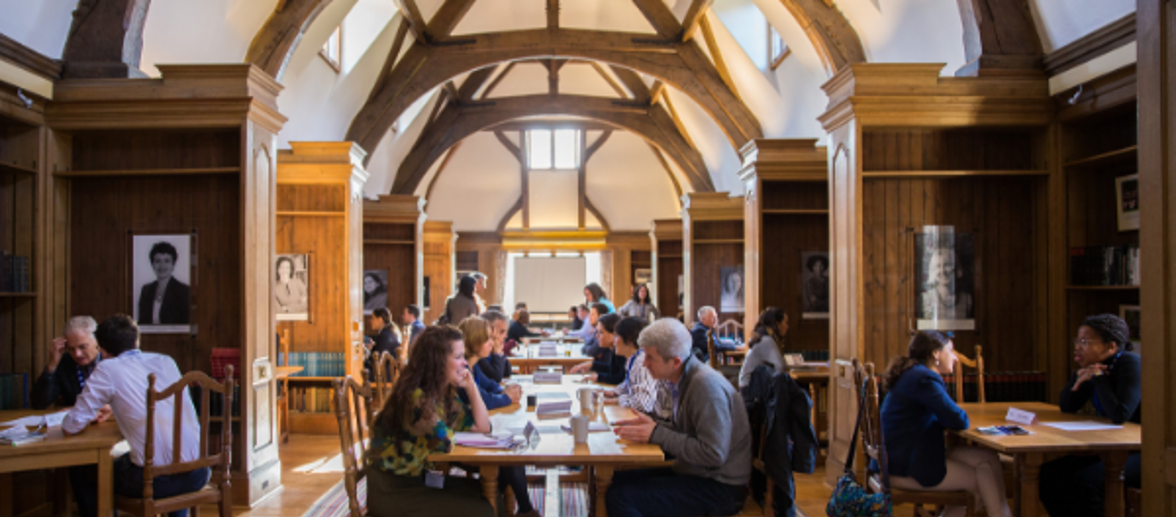At this year’s Rhodes Healthcare Forum, there was frequent discussion regarding more efficient and equitable delivery of existing health care resources. On the second day of the forum we were asked, ‘what next?’. Three different presentations described emerging technology to tackle intractable health care challenges, as we considered how research and development will shape health care delivery in the coming decades.
One of these presentations was by Dr. Chris Karp, the director of Global Health Discovery & Translational Sciences at the Bill & Melinda Gates Foundation. He described an area of emerging importance in vaccinology, and incidentally, a topic that ties in very closely with my own PhD research.
Structural biology involves the visualisation of biological molecules, namely proteins, in 3D through two main techniques (I will spare you the details, but feel free to learn about them learn about them here). Proteins, which make up all living things, carry out diverse functions in organisms including DNA synthesis, maintaining the structural integrity of the cell, mediating attachment, transmitting signals (eg hormones), and many others. By understanding the shape of proteins, we can glean mechanistic insight as to how the protein works and how different parts, or subunits, of the protein come together to execute a larger function.
Dr. Karp discussed advances in structural vaccinology, which applies the techniques of structural biology to make more effective vaccines. It started in the HIV field before spreading to other diseases, including malaria. One type of vaccine involves purifying an individual type of protein (an antigen) on the surface of a pathogen, ideally one that is required for the pathogen to enter host cells. When you deliver this protein as a vaccine, your body produces antibodies, which have the ability to bind to the unique shapes on the antigen. The site where an antibody binds to the antigen is known as an epitope. When the antibody binds, it can block the antigen from attaching to the host cell, thereby preventing invasion.
The catch is, not all antibodies (or epitopes) are equal. A protein is a relatively large and complex molecule and the region of a given antigen that is responsible for host cell entry may only constitute a small fraction of the whole protein. For some pathogens, including Plasmodium falciparum (the parasite that causes the most dangerous form of malaria), this limits vaccine efficacy as you only have a minute fraction of your antibodies capable of preventing invasion. As a result, most vaccine elicited antibodies do nothing.
The approach of structural vaccinology is to identify the regions of the antigen that the most potent neutralising antibodies bind; that is to say, the antibodies that best block invasion of the host cell. Using structural biology, we can visualize where on the antigen these antibodies bind and then use this information to build better vaccines. Essentially, once you know the key regions of an antigen necessary to prevent invasion, you can ‘graft’ these regions, or epitopes, onto a smaller protein scaffold. This allows you to remove the unimportant parts of the antigen and leave only the key inhibitory regions. This focuses your antibody response so that all of the antibodies you produce are targeted to the key inhibitory region.
Dr. Karp discussed this approach as a way to improve malaria vaccines. Currently, the best malaria vaccine, known as ‘RTS,S’, has demonstrated modest efficacy but protection rapidly wanes. The Gates Foundation has funded projects that use a structural vaccinology approach to identify the key inhibitory regions of circumsporozoite protein (CSP), the antigen in the RTS,S vaccine. A summary of the learn about them here, for those who are scientifically inclined. Dr. Karp envisions a next-generation version of RTS,S will exploit this newly-discovered region of vulnerability on CSP.
Undoubtedly, there is much progress to be made in global health through optimised delivery of existing resources. However, it is important to keep an eye on the horizon and consider what technology is emerging and how can it be harnessed to improve health for all.
Robert Ragotte (British Columbia & St Edmund Hall 2016) is third-year Rhodes Scholar who is reading for a DPhil in Infection, Immunology & Translational Medicine.


